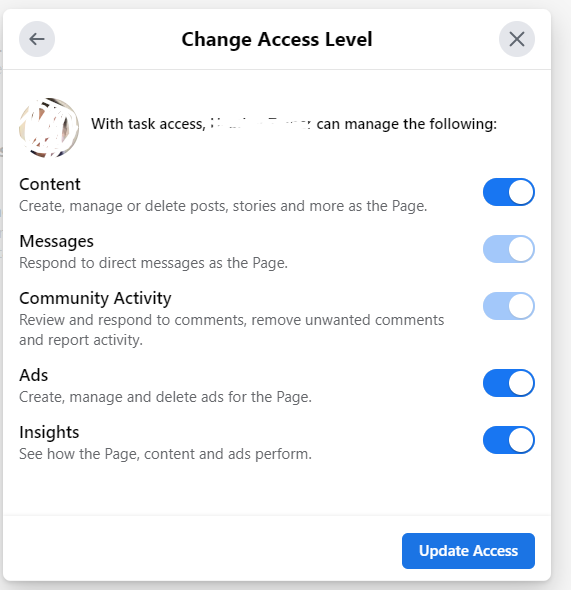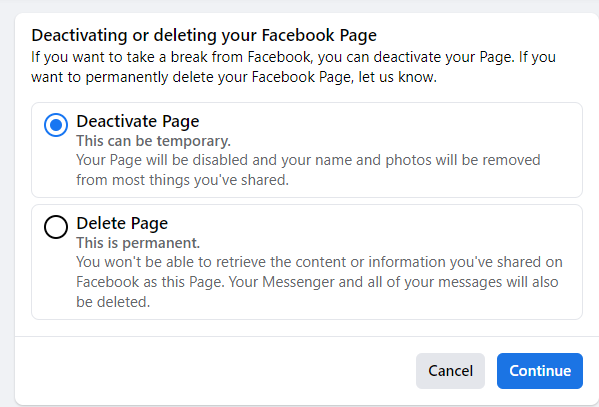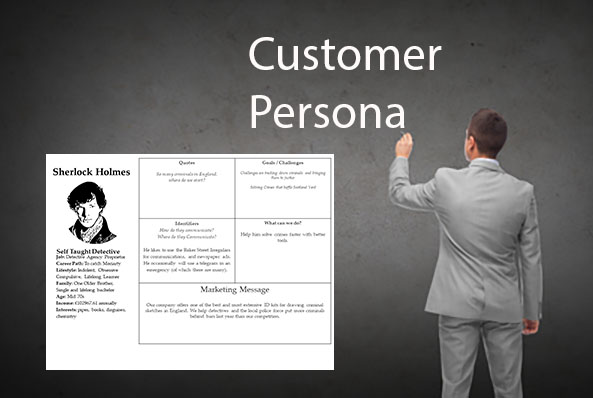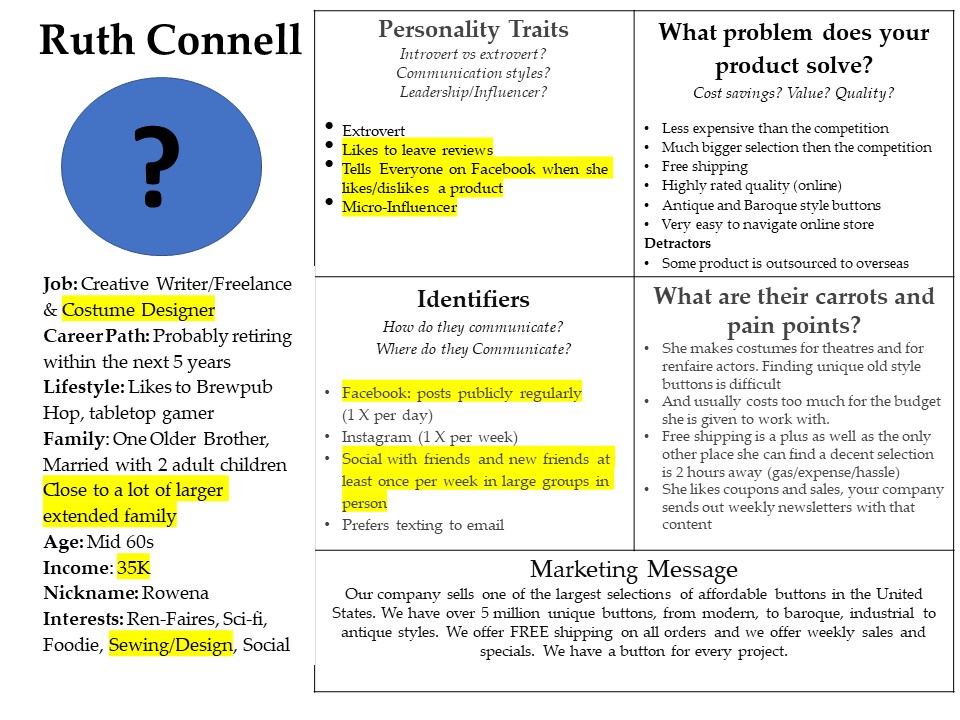by Heather T. | Sep 27, 2022 | Business, Facebook, Operations, Safety, Security, Social Media

1. You allowed unsecure or compromised apps (applications) access to your personal Facebook page (and, through it, your Business page). These can be old, outdated Business page add-ons that are no longer supported by the developers or by Facebook, or they can be malicious applications that deliberately want to gain access to your account.
2. You had an employee or used an external company, and you gave them full access to your Facebook business page. You had a falling out with them or fired them, and they kicked you off your Page as an administrator and then compromised your Page or deleted the Page.
Reason One (more information) and what to avoid.
It would be best if you give as few external applications as possible access to your Facebook account (and, through that, your Business page). Most people grant app access in a variety of ways, to play Facebook games or to take silly quizzes (please do NOT do this!) as many of these are purposefully malicious or they are easily compromised, and though that can compromise your account.
The other way to be compromised is to log in to external sites using your Facebook account. Zoom, for example, gives you the option to log in with Facebook; it also gives you the option to log in with your Google account (please DON’T do this either, it’s even worse). Always create a new account using your email address and a unique password, don’t ever connect social or Google apps. Some newspapers and blogs offer social sign-ins and Google sign-in options as well; please create a unique account with these platforms. An external account gets hacked or compromised, so can any accounts it has access to from the back end.
If your account was compromised through an external application, changing your password in Facebook does not stop the hack; you need to remove the app at fault (I always recommend disconnecting everything and readdressing and reconnecting if there is one you need later on) and then change your password.
See the link at the end for how to access where your app access is located so you can check and disable them.
Reason Two (more information) and what to avoid.
A Facebook business page owner should be the only person with “full” access to the Page and at least one additional person who you implicitly trust: a spouse, a business partner, or your BFF from grade school.
Why have that? What happens if your personal account is hacked or you get locked out of Facebook, either temporarily or long-term? Facebook has no support system per se, no phone number to call for help, and the only way to “sometimes” get them to respond is multiple support requests, and I mean dozens of them. Sometimes…….
Giving an employee or manager, or external company full access to your Facebook page can be a recipe for disaster. If you do, please make sure you trust them! I could tell you countless horror stories about employees or managers being fired and still having access to a page. You can guess what happens from there. I know one marketing company in New England that had a tiff with a tourism group about seven years ago, and they deleted the tourism group’s Facebook page, of which there were over 6000 followers on the Page. Facebook will not restore a deleted page if you don’t have access to it as an administrator. And now, with the New Page Experience, it looks like it can’t be restored at all.
Anyone helping with a page can get more limited access (which means they can’t delete the Page or add or remove admins).
Currently, most pages still have multiple levels of access:
- Admin: Can manage all aspects of the Page. They can publish and send Messenger messages as the Page, respond to and delete comments on the Page, post from Instagram to Facebook, create ads, see who created a post or comment, view insights, and assign Page roles. If an Instagram account is connected to the Page, they can respond to and delete comments, send Direct messages, sync business contact info and create ads. This person can manage everything you can, including the ability to give access to others, remove anyone from the Page (including you) or delete the Page.
- Editor: Can publish content and send Messenger messages as the Page, respond to and delete comments on the Page, create ads, see who created a post or comment, post from Instagram to Facebook, and view insights. If an Instagram account is connected to the Page, they can respond to and delete comments, send Direct messages, sync business contact info and create ads.
- Moderator: Can send Messenger messages as the Page, respond to and delete comments on the Page, create ads, see who created a post or comment, and view insights. If an Instagram account is connected to the Page, they can respond to Instagram comments, send Direct messages and create ads.
- Advertiser: Can create ads, see who created a post or comment, and view insights. If an Instagram account is connected to the Page, they can create ads.
- Analyst: Can see which admin created a post or comment and view insights (i.e., statistics).
The “NEW” Facebook Page Experience:
People with Facebook access
- Content-Create, manage or delete posts, stories, and more as the Page.
- Messages-Send and respond to messages as the Page.
- Community Activity-Review and respond to comments, remove unwanted comments and report activity.
- Ads-Create, manage and delete ads for the Page.
- Insights-See how the Page, content and ads perform.
- This person can manage everything you can, including the ability to give access to others, remove anyone from the Page (including you) or delete the Page.
And some other actions that still seem to be in a bit of flux, you can now control a bit more than you could last year. Last year it appeared that anyone with full access had full control of everything and you couldn’t change it, now it appears you can set access levels with “Facebook Access” and they have added some additional options.

Task Access:
- Community Activity- Review and respond to comments, remove unwanted comments and report activity.
- Messages-Respond to direct messages as the Page.
- Insights-See how the Page, content and ads perform.
- Ads-Create, manage and delete ads for the Page.
Community Managers:
- Community managers can moderate chat comments, suspend or remove people who violate community standards and see all admins of this Page.
As Facebook continues to make changes to the “New” Facebook experience, I would make a note to keep checking access levels and who has access to what. When the changes first rolled out last year, anyone who had any kind of access level to a page automatically got bumped up to “full” access. It appears (I hope) that they have fixed this and added additional levels and options, which is great.
What is not so great is that anytime Facebook makes a change, especially to options in the administrative section, they don’t tell anyone about it. I’ve been tracking the changes with the roll out to the new format since last year, and as usual, anytime a minor (but sometimes very important) change is made to business pages, they don’t make any kind of point of informing users about it.
Even worse is it appears they have now totally deleted the holding period for deleting a page (definitely moot if you don’t have access to it anyway, but….). In the old version, You’ll have 14 days to restore it in case you change your mind. After that, your Page will be permanently deleted.

Old Page Version
In the new version it looks like once it’s deleted, it’s gone.

New Pages Experience Version
While it’s a lot harder to actually dig down to where to get to delete the Page in the new version vs. the older version, this is still NOT a good thing. So please stay on top of your access levels!
Tied into this, you think your personal Facebook account got hacked because you started getting reports from your friends that you were sending weird requests or odd messages to them.
There is a huge number of fake Facebook accounts, far more, I think, then Facebook will ever admit to. With the fake accounts, they take the name of someone, create a new account, and then take the profile picture and header image from the person they stole the name from and use it on the fake account.
They then target your friends (because your friends list is open to anyone logged into Facebook) and start sending them friend requests. Many people accept the request because they see a name and photo of someone they recognized, so they don’t necessarily remember if they were already connected and hit accept. This is the way these fake accounts spread. Most people automatically assume they have been hacked, panic, and change their password. No, folks your account has not been hacked; it’s been cloned. Have friends report the fake profile ASAP. You need to lock down your friends list and also be very aware of what you post.
How can this hack your business account? It usually doesn’t directly, but it can cause identity theft of both your information and your friends’ information, and an awful lot of people have gotten scammed from these both identity-wise and financially.
And I do know two businesses that had employees that got their employee’s Facebook personal accounts cloned. The fake accounts messaged the owner of the business pages they worked for, and the business owners granted the fake accounts access to the business page, thinking they were the real employees and then had hacked pages and deleted pages. One more reason to limit access in the backend of Facebook.
Locking down your friends list and near the end (because it’s in the same section) how to see what apps have access to your personal (and business account with that).
by Heather T. | Sep 6, 2022 | Business, Marketing
 Last week I ran an online workshop about how to create a customer persona. As part of the workshop, I touched on how businesses can use the power of social media to data mine social media profiles for information, and I wanted to elaborate on it a bit.
Last week I ran an online workshop about how to create a customer persona. As part of the workshop, I touched on how businesses can use the power of social media to data mine social media profiles for information, and I wanted to elaborate on it a bit.
The internet is a very scary place, and I don’t think people truly realize how much information is out there for public view.
A perfect example of this is every year when we lived in CT;
I used to run a class for the Middlesex Library, which had a jobseekers program, Social Media for Jobseekers.
Every year I would talk about how with a bit of Googling, how much information was out there online for HR, for companies, and for recruiters to be able to see without even digging that hard or violating any privacy.
In every group, I’d get at least one skeptic: “You can’t find anything out about me; I’m not on any social media channels!!!!”. And I would have them give me their name, the town they were from, and nothing else. I’d say, “Give me a minute on Google, please.”
So “Bill,” you are a long-time member of Rotary, you went to UCONN and studied meat science, you like fly fishing, and you are extremely unhappy with the customer service at XYZ brand. You love to order dog toys from Chewy, and you coach your middle school daughter’s soccer team. That’s only page one. Would you like me to continue?”
Now put that information into a persona (that’s not even including social media data mining), and that’s not even digging very hard.
- Rotary Member (likes to give back to community and volunteer)
- UCONN graduate (large college with an extensive alumni network)
- Meat Science Degree (probably currently works or formerly in the food business, probably wholesale)
- Likes flyfishing (outdoors person, likes to spend time alone (supposition)-passionate about it as found multiple flyfishing forums he belongs to
- Shops at XYZ brand quite a bit.
- Does not like bad customer service (15 bad reviews about it, 40 good reviews about positive customer service experiences)
- Has a dog or dogs
- Has at least one child (A daughter who likes to play soccer)
- He probably purchases soccer apparel for his daughter, who is in middle school and does not have the funds to purchase them herself.
Now how much more can you dig out just going past page one?
Now, let’s see what we can dig out on Social Media. A goldmine, actually many gold mines on top of the one Google gives you. Facebook is a wealth of information, and sadly (but good for businesses), not everyone has their profiles completely locked down.
I’m going to use a friend as an example; I looked at her account through the account of someone she is not friends with to see what information is public to someone logged into Facebook.
I can (publicly/logged into FB but not friends with her in this case) see that she is a creative writer, a former reporter at a local paper, she studied communications at XYZ university, she studied “partying” at another university, she went to ZYX High School, she’s married, and she currently is a costume theater designer and likes renaissance fairs (including making costumes for ren faires).
She also has some posts not set to “friends” only; she likes brewpub hopping with her husband and a large pool of friends. And she’s a board game addict.
She is from New Jersey, currently lives in Pennsylvania (Town specific), and moved there about 30 years ago.
She is also on Instagram (Insta handle provided), and she posts daily on Facebook, only about once a week on Instagram. (so Facebook would be a good target for her, but probably not Instagram. I have no idea if she is on Linkedin or Twitter (because I haven’t looked yet).
She identifies as female, a Gemini, her religious views are Buddhist, and her political stance is Progressive. She frequently shares her husband’s political posts, who is clearly not a republican or a fan of a past president.
I can also see where she’s checked in on Facebook: breweries, bookstores, national parks, cosplay conventions, ren faires, theaters, Indian restaurants, etc.
I can see what kind of movies and TV shows she has indicated she likes, as well as books and a whole lot more information.
I used a fictitious button company (The Button Store, over 5 Million Buttons!) as the business that would be building a persona based on my friend.

A real persona, if you were going to do one for a company, would include a lot more research on people and a lot more data mining of other profiles, but I wanted to use this as an easy example.
Let’s move on to the other social channels: Linkedin also has a lot of information, not just in people’s bios, but what groups they belong to, what interests they have, their backgrounds, who they are connected to, and what they post about.
Instagram and Twitter (I’m not going to include TikTok because of the primarily younger audience, and I wouldn’t UNLESS that was your target market) don’t have as much information at first glance to glean.
But you can tell who they are following, who is following them, generally if they have other social accounts, where they live, how often they post, what they post about, and in Twitter’s case, what they repost and who they converse with, etc. You can find some of that on Instagram, but it doesn’t have the native reposting option that Twitter does.
While this may seem a bit creepy, big companies do this all the time, and it doesn’t stop a small business from using the same data mining techniques. It’s just time-consuming, you are looking for information that is already public.
For small businesses and anyone who uses social media media, I would VERY much encourage people to look at what they post and the specifics of what people can see. Google yourself, too; it’s always eye-opening.
I’m not going to go on a rant about locking down everything again (done that enough in the past) ,but please be cognizant of what’s out there.
From a small business perspective, if you want to make accurate customer personas, set aside 5 or 10 minutes a day, do some Googling, check out some social profiles, and compile information. Please don’t do a generic persona, do as many as you need for your business and customize them to suit.
Hubspot has some great resources I suggest you check out if you are just starting to create personas for your business. When doing your research, don’t forget to check out people’s reviews on Google, Facebook, Yelp, and Tripadvisor, as well as any other review sources you can find. You can glean a lot about someone from their reviews.
HubSpot Resources
https://offers.hubspot.com/persona-templates
https://www.hubspot.com/make-my-persona
https://blog.hubspot.com/marketing/buyer-persona-research
(How to Find Interviewees for Researching Buyer Personas section And 20 Questions to Ask in Persona Interviews are particularly helpful)
Some additional articles you may find useful
https://www.semrush.com/blog/buyer-persona-examples-beyond-basics/
https://buffer.com/library/marketing-personas-beginners-guide/
https://blog.hootsuite.com/buyer-persona/
To use the example of “Bill” in the beginning of the post, good customer service is a sticky point for him. If you were going to use him and say 15-20 other people to create a detailed persona, what could you put in your persona to elaborate on that? And how would that make your company stand apart from the competition? Is this a person/persona that would pay more for terrific customer service? Travel further for it? Prefer to use email or phone rather than shop online for it? What can you glean from what people are telling you? Use Google and the Social Platforms out there to create your personas, don’t just make them up based on what you think should go in there.
by Heather T. | Jan 13, 2022 | Marketing, Operations
 I recently had a friend ask me how to do competition research best online. I’ve also done several workshops on this prior.
I recently had a friend ask me how to do competition research best online. I’ve also done several workshops on this prior.
Competition research or comp research is very easy to do; it’s just time-consuming and if you want to do it right (suggested!), do the time; it will be well worth it.
Step one and you can do this is a spreadsheet, or you can do it in MSWord or Google Docs. I like using a combination of both, a spreadsheet in Google Sheets for the base information and then linking it to a Google Doc with more information. I also like to take screenshots, LOTs of screenshots. Screenshots of their website, screenshots of their social media posts, as well as screenshots of reviews, both good and bad.
Some specific things I look for are an email newsletter (if so, sign up!) Do they post consistently on social media, and are they getting engagement from what they are doing (or not) if certain posts or post types are getting high engagement, screenshot them!
While on a PC you can take a full screenshot using “PrtScn” on your keyboard, I prefer the snipping tool that comes standard. It is in the Start Menu under Windows Accessories. It lets you be selective about what you snip and allows you to mark the image up.
For Mac users, instructions here on screenshots https://support.apple.com/en-us/HT201361
A few of the other things I look for are their reviews. Do they respond to reviews, just the bad or the good and the bad, or not at all? How are the review responses? Are they well crafted and polite and try to address the problem, or are they defensive and combative?
You can learn a lot from reading competitors’ reviews, both from their excellent reviews (these are key things your business will have to concentrate on competing with) and the bad (these are things your business can excel at and blow away the competitors). Check all the review sites, Google My Business, Facebook, Yelp, BBB, etc.
Have they optimized their directory listings and their social media accounts? Do their links work? Do their links to social media channels from their website work? I’m always surprised by how many businesses don’t pay attention to this; they change their social media handle but forget to update the links on their websites.
In reviewing competitors, social media listings look at who they follow (its public to view) and who follows them. Keep an eye out for an overabundance of fake follower accounts. They are easy to spot once you start to eyeball them. You can also quickly tell if someone has a high follower/like count but zero engagement on posts. Please don’t buy followers. Yes, it is cheap to do, but it does nothing for you except inflating your following and dinging your credibility. And there is no value as a business owner for doing so.
While there are a lot of paid sites out there where you can do backlink research, my personal favorite https://www.semrush.com/ (not an affiliate link), I like the program; they generally have a free trial period that I encourage businesses with limited budgets to take advantage of. For anyone who needs to do high-level ongoing research, the pricing at $120 a month can be worth it.
You can do all of this research using a tool, but I also like doing it organically because when you search for the business in Google and Bing (and do both because you will get differing returns), you also see the snippets from the sites that are linking to your competition. It can help if you see a competitor is linked from a site that’s relevant and it’s a junk link connection, rather than one of the research tools which gives you the link.
The easiest way to do this is to go to Google and Bing and put in variations. Put the information in quotes for the best return: “Business Name” ie. “Jane Doe Inn.” If it has an LLC or other variations, Google those too. “Phone number,” ie “860-555-1212” and then their domain name. Don’t add the http/https or the www (if they include it), just the domain and the extension ending, i.e., “janedoeinn.com.”
This is a base of what I use, and then I add additional things like pricing, like services, what they offer etc.
Business Name:
Name:
Physical and Mailing Address(es):
Phone Number(s):
Email Address(s):
Domain Name: ( ie. https://www.janedoeinn.com)
Notes:
ADA Score: (I use Lighthouse for this. https://developers.google.com/web/tools/lighthouse)
Notes:
SEO Score: (I use Lighthouse for this as well)
Notes:
Mobile Friendly: (Is their website? Some sites look great on a computer, not so much on a cell phone or tablet)
GMB: (this is Google My Business, add the full URL))
Reviews: (how many reviews, review rating, do they respond? Don’t forget those screenshots)
Notes:
GA Analytics: Yes/No
(this is Google Analytics, you can see if they are using it and the next note as well about Plugins by putting their domain name/url into https://builtwith.com/ . This is also useful because it will tell you what the site was built with.
Plugins if WP: (WP is WordPress, you may see some things you like on a WordPress site, like a photo slider or gallery and you can find out what plugin was used)
Blog: (add the full URL)
Followers (IA): (IA is If Available, some blogs have that public)
Notes:
Average blog post word count:
Newsletter: (what are they using? Constant Contact? Mailchimp? Other?)
Notes:
Privacy Policy: (I add yes or no but if yes add the link, same with the ADA policy)
ADA Policy: (This refers to ADA Website Compliance, add the full URL)
Covid Statement: (If yes add the full URL)
Facebook: (add the full URL, ie https://www.facebook.com/janedoeinn)
Likes:
Followers:
Notes:
What Kind of Content are they posting?
Facebook Ads: (You can see if a page is running or has run Facebook ads, not boosts, just ads, by scrolling down on the left hand side of a business page to “Page Transparency”. When you click on that, you can go to “Ad Library”.
Reviews: (number and comments)
Notes:
If you really want to dive deep, track down the owner’s and manager’s personal profiles, I realize this seems rather stalkerish. From a business research standpoint, most people don’t have their profiles totally locked down. You can gain some very valuable business information about what groups they belong to, as well as whether they are sharing their business posts onto their personal profiles.
Instagram: (add the full URL)
Followers:
Following:
Notes:
What Kind of Content are they posting?
Twitter: (add the full URL)
Followers:
Following:
Notes:
What Kind of Content are they posting?
Youtube: (add the full URL)
Followers:
Notes:
What Kind of Content are they posting?
Pinterest: (add the full URL)
Followers:
Following:
Notes:
Linkedin Page: (add the full URL)
Followers:
Follower
Notes:
What Kind of Content are they posting?
If the primary owners or managers have personal Linkedin accounts, I also like to take a look at them. If you don’t want accounts to know you have viewed their profile, you can go into your own personal Linkedin settings and change how you appear. Go to “Me” then “settings and privacy”. Then “Visibility” on the left side and “Visibility of your profile & network”. Next in the middle, go to “Profile viewing options”. If you select “private mode”, I recommend that you log out of Linkedin and then log back in and check. I’ve heard reports that sometimes it doesn’t take, and it is better to log back in and check to make sure before assuming.
Other Ads/Google PPC: (if you use a tool like Semrush and many others, they will tell you if comps are running ads)
Notes:
Yelp: (add the full URL)
Reviews: (number and comments)
BBB: (add the full URL)
Reviews: (number and comments)
Bing: (add the full URL)
Indeed: (add the full URL)
Employee Reviews: (number and comments)
Glassdoor: (add the full URL)
Employee Reviews: (number and comments)
Checking Employer review sites give you an excellent insight into the competition.
Sites of Interest/Linked from:
Review your comp lists every three months or optimally every month or the very most every six months. Competitors change pricing, change offerings, change services, bring on new key staff or have them leave.
If you are not looking at your competition, you can guarantee some of them are looking at you. And if you are not keeping an eye on their pricing changes or new offerings, you can lose business because you are not staying on top of it. The time spent on reviewing gathered information is well worth it.
by Heather T. | Nov 9, 2021 | Blog, Marketing, Operations, Social Media
 This is an updated post on one I had done way back in 2010 (yikes it’s hard to believe that it’s been over decade, but still relevent) with bit more information and a couple of additional ideas.
This is an updated post on one I had done way back in 2010 (yikes it’s hard to believe that it’s been over decade, but still relevent) with bit more information and a couple of additional ideas.
I thought it might be time to update it, as it’s one of the most common questions I get from people, even when I tell them you know………. there are a ton of ideas and post ideas out there already floating around and don’t forget to look at what your competitions doing,
Sometimes people want some more specific ideas, so I thought it was time to give the post a little spiff up. I do find it kind of amusing that the old post refered to “fan pages”, Facebook’s original name for a business page.
(Keep in mind many of these could be in visual or image formats including video) Many can also be used for blog posts with some additional information and content. Visual/Image posts are best for Instagram. Linkedin business and personal pages, Facebook business pages and groups, and Twitter, it is best practice to try to share an image with text.
*Don’t forget to share links to your website often as well.
The number one mistake in using social media is forgetting to add targeted links to posts. People will not look for your website link if they don’t see it in the post itself.
If you have a product or service, you are promoting on social media make your links count. If you are talking about a particular service you offer, have the post link go to your services page where you talk more about the service, NOT to your homepage, you don’t want to make people have to hunt.
- A promotion.
a. Come and stay during the month of March and get two free ski tickets.
b. St. Patrick’s Day Special, get a complimentary green beer & popcorn with an order of bangers & mash (*must be 21) = 117 characters, still room for using a shortened link on Twitter.
c. Get double points on your Ace rewards card with every hardware purchase the first week of March.
d. With a purchase of any Don Fredo jewelry, get a free earring cleaning kit.
e. Get a full hair coloring treatment and receive a free trim.
f. At your next tire alignment, get a free oil change.
g. New accounting customers get a 10-minute free business analysis.
- A sale.
a. Thursday nights are half-price appetizers.
b. Sale though March 31 on Dunlop All-Season Radial Tires, save 20% off.
c. All Michelle Leslie tops and slacks on sale $15 off through this Sunday.
d. Stay 2 nights get the 3rd night 1/2 Off.
e. Two for one wool sock special every Saturday.
f. Mini-mart Super Gulps 99¢, 5-6 pm every Monday – Friday.
g. Photography special: Book a wedding with us and get an extra set of CD’s with your photos now through May 3.
- New products, services, specials, rebates, vouchers, offers, packages
- Recipes (recipes get one of the highest rates of pass-alongs in social media, if you are a retailer, share your Grandma’s killer brownie recipe and make it the next time you have a sale at your woodworking store. It doesn’t matter what business you are in. Also, Recipe failures with a funny story make great shared content.
- Guest, customer, or client comments or testimonials (with permission if sharing the full name).
- Your business in the news.
- Your business is getting or received an award.
- One of your employees is getting/or gotten an award, even if it’s of your creation, i.e., best salesperson of the month.
- Your area in the news.
- Promote any upcoming events. Open Houses, classes, workshops, webinars, networking, etc.
- A frequent and loyal guest, customer, or client in the news, please be aware of privacy though, depending on your business, a client may not feel comfortable with you sharing the information unless you know them well, it’s best practices to ask if it’s ok.
- Pictures of your business, interiors, exteriors, products (if applicable).
- Pictures of your employees.
- Pictures of happy guests, customers, or clients (with their permission and preferably in writing or verbally but documented).
- Area Events going on, you can also tie this into specials and promotions you are holding.
- A brief, “we get frequent questions “about” and put in answers.
- What does your business do to differentiate itself from others.
- Holiday Posts, a nice graphic or photo and a wish for a Happy Thanksgiving or other Holiday.
- You just found a new product you are using and love it, be it food or a new fabric softener or a new electric cordless drill; describe it and explain why you love it.
- Day of the Year posts. National Calendar days. May 20 is National Rescue Dog Day. It’s helpful if it ties into something related to your business. Two of your own dogs are rescues. One of your employees volunteers at the local dog shelter.
- Funny Loyal Guest, customer, or client stories. *caveat: make them funny and only funny, proof heavily to make sure they are not harmful or negative in any way. While someone may go into the wrong changing room by mistake at a store, and it may have had very amusing consequences, it raises things like, “don’t they have locks on the doors?” (even if you do and point out they didn’t lock them).
- Do some product/area/service-specific reviews. You have a couple of apple orchards nearby. Do some write-ups on the apples, do some research on types of apples, link to sources. You carry a particular line of clothing or cordless drills or snow tires; what is special/different/better/unique about them.
- A bio of your self or other owners or management.
- Bios of your staff.
- Interview customers. Keep in mind using video is always a bonus.
- Interview vendors.
- Helpful Tips: examples: restaurants; a good wine, lodging; cooking/baking tips, realtors: home buying tips, Landscapers: gardening tips, mechanics: car care tips, drycleaners: stain removal tips. For every type of business, there is always helpful information out there that someone can use.
- Industry News.
- Ask for feedback from blog readers, fans, followers, and from prior guests, customers, or clients. You just went from goose down pillows to memory foam pillows. If asking on a blog post, ask for some thoughts from people, and don’t forget to include the link to the blog article or post link when you do your next email blast. You just switched from using Redken products to Matrix Biolage in your salon. People love to be able to give feedback and asked what they think about things; this is an excellent medium for doing that, exploit it. Questions asked are great prompts, and you can get valuable information on your own business or something new you may be considering doing.
- Help wanted posts.
- Lists. List posts get high engagement. 10 of our top selling products. 12 of our favorite woodworking bloggers, 15 tips on saving money, 7 best places to go to get Sushi, etc.
- Links to resources, also great in list post format. 10 places to save money on your business insurance.
- If you are blogging, don’t forget to share your blog posts on your Facebook business page, your personal Facebook account, Facebook groups (if it’s permitted), Twitter and Linkedin personal and business pages. If blog posts have images (highly recommended), don’t forget to pin the image (with your blog post link) to Pinterest if you use it.
- Videos from Youtube, Vimeo and Tiktok.
- PSAs, especially ones that are relevant to what’s going on in the world today. Try to stay away from politics or religion.
- A Non-profit or charity you support.
- Your business contributing to the community or donating a product or service.
- A giveaway, contest or drawing. Please make sure you check each social media’s T.O.S (Terms of Service) before promoting these online, each has different requirements and disclosures.
A few ideas for Business Social Media Platform Shares
(Facebook (Personal, Business & Groups), Twitter, Pinterest, and Linkedin (Personal and Business)
While Instagram does have external apps to share posts, PLEASE ask permission first of the Instagram author. On Youtube, you can add videos to “Playlists”
https://support.google.com/youtube/answer/57792?hl=en&co=GENIE.Platform%3DDesktop
and
https://support.google.com/youtube/answer/57792?hl=en&co=GENIE.Platform%3DAndroid
If sharing on Facebook from a personal account, please ask permission first.
- A gorgeous photo taken of your town, your area, your state (make sure the author gets image credit, shares from a page, or their own group rather than uploading a photo are highly recommended so you don’t violate copyright.)
- A vendor or a company you buy from shares something of interest related to your product or business.
- Funny or amusing content, try to keep it clean.
- Helpful tips (not the same thing as Educational content as these are generally short form posts) from non-competitors.
- Educational content. A blog post from a Leadership expert with a little of your personal feelings about why you liked it or something that stood out about it.
by Heather T. | Apr 14, 2020 | Bed and Breakfasts, Blog, Lodging, Marketing, Social Media
 So I think I’ve sent these links out including the post ideas several hundred times within the last few weeks so thought if anyone else might find them useful, have at it. 🙂
So I think I’ve sent these links out including the post ideas several hundred times within the last few weeks so thought if anyone else might find them useful, have at it. 🙂
Resource Links for Social Media and other online tools I use quite a bit:
Canva
Youtube
Pinterest
Instagram
Twitter
Facebook
Linkedin
Google Docs & Spreadsheets Tutorials
To reduce Image File Size
Remove Image Background
CloudConvert File Converter
Free PDF editor & form filler (use the free online version)
Stock Photo Information
Model Releases (for adults and children)
25 Blogging ideas for Inns and B&B’s (also useful for things to tweet about or blog about or use for other social media) plus more underneath crisis related as hard sell advertising is not recommended right now.
- Recipes: recipes you use, recipes you’ve come across that sounded good that the inn is going to try at some point, recipes given to you by guests or friends (including other innkeepers).*caveat: No poaching of Google images, take the photos yourself or buy from a stock photo source or guests may have pictures to share with you (always credit them) Good images can be obtained for around a buck from stock photo sources. If the recipe is something you serve on a regular basis, highly recommended you take an actual photo or use stock that comes very very close to the real thing. I hope I don’t have to explain why ?
- Recipe failures with a funny story.
- Guest Comments.
- Your Inn in the News.
- Area attractions in the news.
- A frequent and Loyal Guest in the News.
- Specials and Packages at your inn. (wait until things are closer to opening up, but mention them as reminders)
- Area Attractions with contact information about the attraction, a weblink, directions and why its interesting.
- Area attractions reviews (including dining).*caveat: especially if its dining, make sure it’s a review that a recent guest or guests had and not your personal point of view, i.e. don’t piss off the locals that might refer you.
- Trip Itineraries for Guests, make a custom Google map pined with locations (this is free by the way and easy to use)
- Pictures of the inn: if it’s food give a title to it if it’s not accompanied by a recipe, if it’s a particular location in or around the inn, describe it.
- Pictures of happy guests, with their permission and preferably in writing. Customizable Model Releases in MS word. (link below)
- Area Events going on, you can also tie this into area restaurants having specialty diners or wine tastings.
- A brief, “we get frequent questions “about” and put in answers.
- What does your inn do to differentiate itself from the others.
- You just found a new product you are using it and love, be it food or a new fabric softener, describe it and explain why you love it.
- Funny guest stories. *caveat: make them funny and only funny, proof heavily to make sure they are not negative in any way. While a wife may go into the wrong room by mistake in the middle of the night may have very amusing consequences, it raises things like don’t they have locks on the doors? (even if you do and point out they didn’t lock them) etc. etc.
- Do some food specific reviews. You have a couple of apple orchards nearby. Do some write-ups on the apples, do some research on types of apples, link to sources.
- Research and write about area birds that come to and hang around the inns, pictures are always a plus.
- Research and do some write-ups about the area plants and trees in the area. You have a historic stand of black birches in the area, some history, background (and pictures) you grow opal basil in your inn garden, tie it into some recipes you use and write about the difference in taste and appearance between that and regular basil.
- Ask for feedback, from blog readers and from prior guests. You just went from goose down pillows to memory foam pillows. Ask for some thoughts from people; don’t forget to include the link to this blog article when you do your next email blast.
- A bio of yourselves and/or your staff.
- A book review or commentary about a local author.
- Suggestions for weather/time of year guests. i.e. August is prime season for ticks in New England, add tick repellent tips, wear white, use a good repellent (which we also keep extra of the at inn by the way) etc. etc. On hot muggy days our guests like to go to a cool shaded out of the way place to dip and bring a picnic (provided by the inn as an amenity of course).
- Targeted things to do, coming with an elder relative, they might like…. Coming with young children, they might like….Bringing your dog, you and your pup might like……
Originally on: 25 Blogging Ideas for Inns and B&Bs (and other posting channels)
Some Additional ones from recent blog posts (Covid Crisis)
- What you are doing or going to do in the community to help.
- Testimonials and reviews from past guests.
- Recipes you make normally (with lots of pictures) tie some quotes from past reviews in there too.
- If you are learning a new skill or more “about “something (highly recommended) write about it!
- Tips on recipes substitutions and also cooking recipes or tips that people can do with limited ingredients.
- Local news (and other news) of people reaching out and doing something nice for others. Everyone needs the positive right now.
- Photos of things in the inn, not necessarily rooms, but closeups and write a story about them.
- Photos of outside the inn, wide shots and closeups too, as Spring comes, flowers and other plants are going to be coming up and blooming, sharing beauty is always a positive. People need it and will continue to need it.
- Test recipes (if you are going to or can play with new ones) ask for feedback on posts, what do people think? Or just post the link and add some text.
- Do online cooking tutorials or demonstrations. Live stream it if you are up for it.
- Other skills or other hobbies you can share online
- If you have dogs or cats (or other animals) at your inn and you are not already using them for marketing, now is the time.
- Talk about some of the things you have in the inn and WHY you like them and use them.
Originally on Working towards future heads in beds and Restore, Engage, Aggregate, De-stress and You for Innkeepers
And ALP (Association of Lodging Professionals) will have something hopefully useful to help Innkeepers, stay tuned for an announcement on Wednesday afternoon……..
 This is an updated post on one I had done way back in 2010 (yikes it’s hard to believe that it’s been over decade, but still relevent) with bit more information and a couple of additional ideas.
This is an updated post on one I had done way back in 2010 (yikes it’s hard to believe that it’s been over decade, but still relevent) with bit more information and a couple of additional ideas.




 Last week I ran an online workshop about how to create a
Last week I ran an online workshop about how to create a 
 I recently had a friend ask me how to do competition research best online. I’ve also done several workshops on this prior.
I recently had a friend ask me how to do competition research best online. I’ve also done several workshops on this prior. So I think I’ve sent these links out including the post ideas several hundred times within the last few weeks so thought if anyone else might find them useful, have at it. 🙂
So I think I’ve sent these links out including the post ideas several hundred times within the last few weeks so thought if anyone else might find them useful, have at it. 🙂